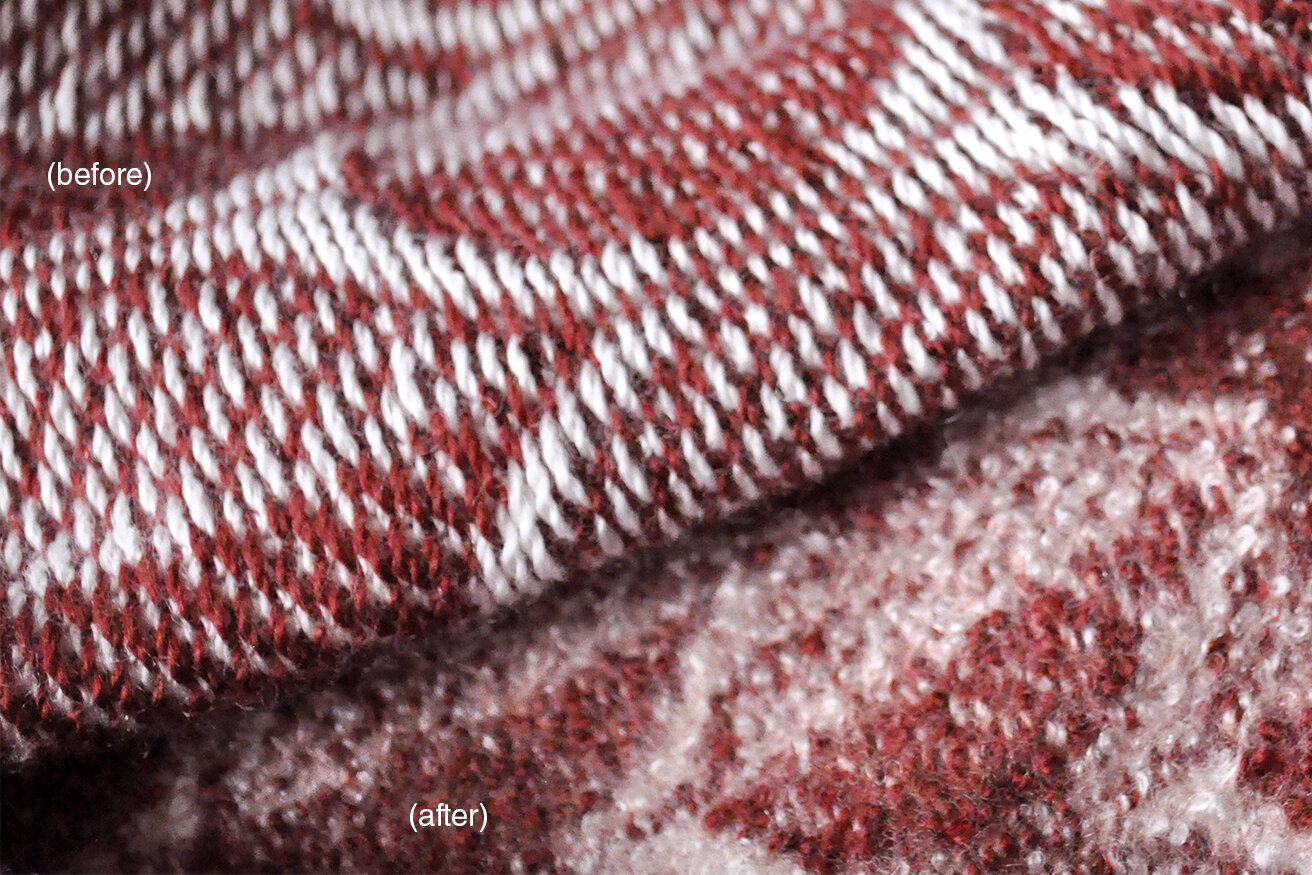Has a beloved sweater ever shrank to child-size in the wash? Did a scarf ever emerge from the dryer a stiff, fuzzy mess? If so, then you’ve experienced the heartbreak that is felting. When it accidentally happens, felting is a cruel and unforgivable process that sends clothes to their grave. And with sweater weather in full swing, it’s the perfect time to give it a closer look. You’ll learn exactly how felting occurs and how to prevent it from happening to you (and your fav knits) again.
Let’s start at Square 1: What is felting?
Felting is a process where fibers separate from their original yarn structure and tangle together, creating a thicker, matted fabric. Let’s use the knit cowl below as an example. In this cowl, the fibers start off twisted together in the form of yarn. As that cowl felts, however, those fibers leave the yarn and start matting together into new fabric structure. Not only does this process shrink the fabric, but also makes it thicker, stiffer and warmer.
Who’s susceptible to FELTING?
All woolen fibers: Wool (sheep), cashmere (goat), mohair (goat), camel, alpaca and other fibers that come from animal hair.
Woolens felt because their fibers naturally have a crimped shape (just like the hair trend of the 90s) that allows them to tangle and matte. It’s also what makes them great at trapping heat and keeping us warm. Because plant-based fibers (like cotton, flax, etc) and synthetics (polyester, acrylic, etc) don’t have this crimp, they aren’t at risk of accidentally felting.
How Does it happen?
Here’s the formula: Water + Heat + Agitation (friction). I know. It’s crazy how simple it is. The longer a woolen fabric is exposed to these elements, the more it will felt.
How To prevent it?
Considering how it just takes water, heat and agitation, it’s not surprising that accidental felting happens in the laundry. Proper garment care is the key to prevention and that starts with washing. Ignore the myths and rumors. Woolen fabrics should be handwash or dry clean ONLY. Your washing machine might claim to have a “delicates” or “handwashing” cycle. DO NOT DO IT. Washing machines notoriously over-wash and over-agitate your clothes, regardless of the cycle. Not only does this put them through more wear, but it’s also the perfect environment for felting. Trust me. It’s not worth the risk!
Similarly, woolen fabrics should be air dried ONLY. The machine dryer is literally just heat, friction and wet clothes… It’s a felting playground so steer clear. When cleaning your woolens, stick to handwashing and air drying. You want to use cold water and as little agitation as possible. Feeling unsure about how to do it properly? Here's an easy step-by-step.
My Knits Felted. Help!
Has felting happened to you? First off, my condolences. We’ve all been there and it sucks when something sneaks into the washer. Secondly, there are a lot of products that claim “fix” or “undo” felting, but unfortunately, they aren’t perfect solutions. Remember, felting is a process where fibers release from the yarn and matte together into a new fabric structure. There’s no product that can put those fibers back where they came from. In other words, felting is irreversible.
If the felting is minimal, there’s a chance for some products or a splash of hair conditioner to soften up the fabric. However, if the felting is significant (the fabric has shrank and feels very stiff), the damage is done. Save your money, don’t bother with those products, and I’m sorry for your loss. #rip
That’s the low down on felting! Please let me know if you have any questions and be sure to spread the word to anyone who likes to surprise you by doing your laundry (a significant other, a roommate, your mom, etc). It’s the sweetest gesture ever until beloved cashmere emerges shrunken from the dryer. Cheers to keeping our knits safe this holiday season!
x Kristine of Declarative


